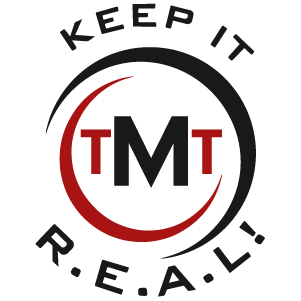I’ve learned through years of trial and error that achieving substantial growth requires more than just hard work and good intentions. It demands strategic goal setting and a metrics-driven marketing approach tailored specifically for your industry. Today, I want to share with you the essential strategies that have helped drive our growth and operational efficiency.
Subscribe to the TMT YouTube channel here
Setting Achievable Goals
One of the most critical steps in driving your MSP forward is setting realistic yet challenging goals. In my experience, a good goal stretches your capabilities but remains attainable. Over the years, I’ve seen many MSPs falter by setting goals that are too ambitious or too vague. You need annual and quarterly goals you’re determined to achieve. And this isn’t just about putting any number on the board; it’s about setting a target that compels your team to excel while still being within reach. Here are key aspects to consider when setting effective goals:
- SMART Goals: Ensure that each goal is Specific, Measurable, Achievable, Relevant, and Time-bound. This framework helps avoid the common pitfalls of vague or unrealistic goals. For example, rather than aiming to “increase revenue,” a SMART goal would be, “increase monthly recurring revenue by 10% within the next 12 months.”
- Stretch Goals: While it’s important to keep goals achievable, they should also challenge your team to push beyond their comfort zones. Stretch goals can inspire innovation and significant improvements. For instance, if your historical growth rate is 10%, setting a stretch goal for 15% growth can motivate your team to explore new strategies and efficiencies.
- Incremental and Long-Term Goals: Balancing short-term wins with long-term ambitions is crucial. Setting quarterly and annual goals helps maintain momentum, while also aligning with a multi-year strategic vision. This approach ensures that daily operations contribute to the bigger picture of your MSP’s growth.
- Alignment with Vision and Mission: Each goal should contribute to the broader vision and mission of your MSP. This alignment ensures that your team remains focused on what truly matters, avoiding distractions and misaligned efforts.
The Role Of Industry Benchmarks
Understanding industry growth averages is crucial. These benchmarks guide us to set our growth targets. If the average MSP grows by 15% annually and you’re growing by 10%, you’re not really growing; you’re falling behind. It’s essential to know where you stand in relation to your peers to realistically gauge your company’s performance and set your sights accordingly. Here are some benchmarks to be mindful of:
- Industry Growth Averages: Knowing the average growth rate for MSPs is essential. If the industry grows at an average of 15% per year, and your MSP is growing at 10%, this signals a need for strategic adjustments. Conversely, if you’re growing at 20%, it highlights your competitive advantage.
- Operational Benchmarks: Apart from financial growth, other operational benchmarks such as customer satisfaction scores, employee turnover rates, and operational efficiencies should also be monitored. These benchmarks can provide insights into the health of your internal processes and customer relationships.
- Utilizing Benchmark Data: Use benchmark data to set realistic performance targets, understand market trends, and make informed decisions. For example, if benchmarks indicate that leading MSPs allocate a certain percentage of revenue to marketing and new technology, you might consider aligning your budget to reflect these standards.
- Custom Benchmarks: While industry benchmarks are useful, it’s also beneficial to develop custom benchmarks based on your specific business model and market. Custom benchmarks allow for more precise tracking of performance relative to your unique business objectives.
Importance Of Data and Metrics
In managing an MSP, nothing speaks louder than data. Metrics are the lifeblood of strategic decision-making. Numbers don’t lie. Numbers are binary. In sales, you either hit the goal or you didn’t. This binary nature of sales data helps remove ambiguity from performance assessments and aids in making informed decisions. Tracking progress toward your goals without reliable data is like navigating without a compass. Here are ways to effectively utilize data and metrics:
- Key Performance Indicators (KPIs): Identify which metrics are vital to the success of your MSP. Common KPIs include Monthly Recurring Revenue (MRR), Customer Acquisition Cost (CAC), Customer Lifetime Value (CLV), churn rate, and service ticket response times. These indicators help track financial health, customer satisfaction, and operational efficiency.
- Real-time Data Monitoring: Implement systems that provide real-time monitoring of these KPIs. This allows for swift identification of issues and opportunities, enabling proactive management rather than reactive responses. For example, if ticket resolution times begin to increase, immediate action can be taken to address the issue before it affects customer satisfaction.
- Data-Driven Decision Making: Base strategic decisions on data analysis. For instance, if data shows a high CLV in a particular market segment, you might focus more resources on that segment. Conversely, discovering a high churn rate could prompt a review of your service offerings or customer service processes.
- Benchmarking Against Data: Use your data to set benchmarks within your organization. This not only helps in measuring current performance but also aids in setting realistic goals based on historical data and trends.
Enforcing Sales Quotas And Performance Standards
Setting and enforcing sales quotas is another area where many MSP owners stumble. You must have definitive quotas and minimum performance standards. You have to have a definitive quota, and you need to measure everyone against it. If a salesperson fails to meet their quota consistently, it’s a clear indicator that something needs to change. Immediate action can prevent long-term losses. Effective performance standards should be:
- Clearly Defined: Each role within your MSP should have clear, documented standards that describe what success looks like. For sales teams, this might be the number of new client contracts signed per quarter. For technical staff, it could involve metrics like average handling time or customer satisfaction scores.
- Quantifiable and Observable: Make performance standards quantifiable wherever possible. This removes ambiguity and makes the evaluation process more objective. For instance, instead of saying “improve client satisfaction,” specify “achieve a client satisfaction score of 90% or higher.”
- Aligned with Business Goals: Performance standards should directly support your overall business objectives. If your goal is to increase MRR, then sales performance standards should align with this goal, focusing on activities that drive new and upsell revenues.
- Regularly Reviewed and Adjusted: As your MSP grows and market conditions change, so too should your performance standards. Regular reviews allow you to adjust these standards to remain challenging yet achievable, ensuring they continue to support your strategic goals effectively.
- Linked to Rewards and Consequences: Establish a clear system of rewards for meeting or exceeding standards and consequences for failing to meet them. This could range from bonuses and promotions to performance improvement plans. Such systems motivate employees and underscore the importance of meeting performance expectations.
Strategic Planning and Resource Management
Effective resource management begins with backward planning from your goals. Whether it’s a financial target or a client acquisition goal, you need to plan backwards. This approach ensures that every resource allocation or strategic initiative directly contributes to your overarching objectives.
- Setting the Vision and Mission: Start by clearly defining the long-term vision and mission of your MSP. These will guide all other aspects of your strategic planning process, ensuring that every goal and action aligns with the core objectives of your business.
- Assessing Your Current Position: Use a SWOT analysis (Strengths, Weaknesses, Opportunities, Threats) to assess your current market position. This helps in understanding internal capabilities and external market conditions, which are critical for making informed strategic decisions.
- Goal Setting: From the assessment, set specific, measurable, achievable, relevant, and time-bound (SMART) goals. These goals should challenge your organization but remain achievable. Break down these goals into annual, quarterly, and monthly targets to maintain focus and momentum.
- Developing Strategic Initiatives: Identify key initiatives that will drive you towards your goals. This may include new service offerings, market expansion, strategic partnerships, or technology upgrades. Each initiative should have assigned leaders and a clear timeline for execution.
- Implementation and Monitoring: Implement the planned strategies and regularly monitor their progress against your set benchmarks and KPIs. Adjustments should be made as necessary to ensure the strategy remains effective and responsive to any changes in the business environment.
Leveraging Personal Strengths and Delegation
As an MSP owner, recognizing your strengths and delegating other tasks is vital for operational efficiency. For instance, I excel on stage and in writing sales letters, which aren’t typical CEO tasks, but they are where I add the most value. That’s why I made Jeff President, so I can focus on what I do best. Understanding what you can uniquely offer and trusting others to handle the rest can significantly boost your productivity and business growth.
- Identification of Strengths: Use tools like StrengthsFinder or Myers-Briggs Type Indicator to help team members identify their personal strengths. Understanding these can help in aligning tasks and roles to individual capabilities.
- Role Alignment: Align roles and responsibilities based on the strengths of each team member. For example, someone who excels in client relationships should be positioned where they can regularly interact with customers, while a technically proficient team member should focus on solving complex IT problems.
- Delegation and Trust: Effective delegation involves assigning responsibilities to the right people. Trust your team members to take on tasks that play to their strengths, freeing up your time to focus on strategic leadership and areas only you can handle.
- Team Building and Development: Build a team culture that values diverse strengths. Provide opportunities for professional development that enhance these strengths, rather than trying to correct weaknesses. This fosters a more engaged and competent team.
- Maximizing Productivity: When people work in roles that fit their strengths, they not only perform better but also exhibit higher job satisfaction and engagement. This leads to higher productivity and lower turnover rates.
Conclusion
Strategic goal-setting and metrics-driven marketing are not just buzzwords; they are essential practices that can significantly influence your MSP’s success. By setting realistic goals, using data to guide your decisions, enforcing standards, managing resources wisely, and leveraging your strengths, you can enhance your company’s performance and achieve greater success.
Discover What It Takes To Say Goodbye To “Normal” Growth And Add Multiple-Millions To Your Business EVERY Year At Our One Day MSP Growth Event


